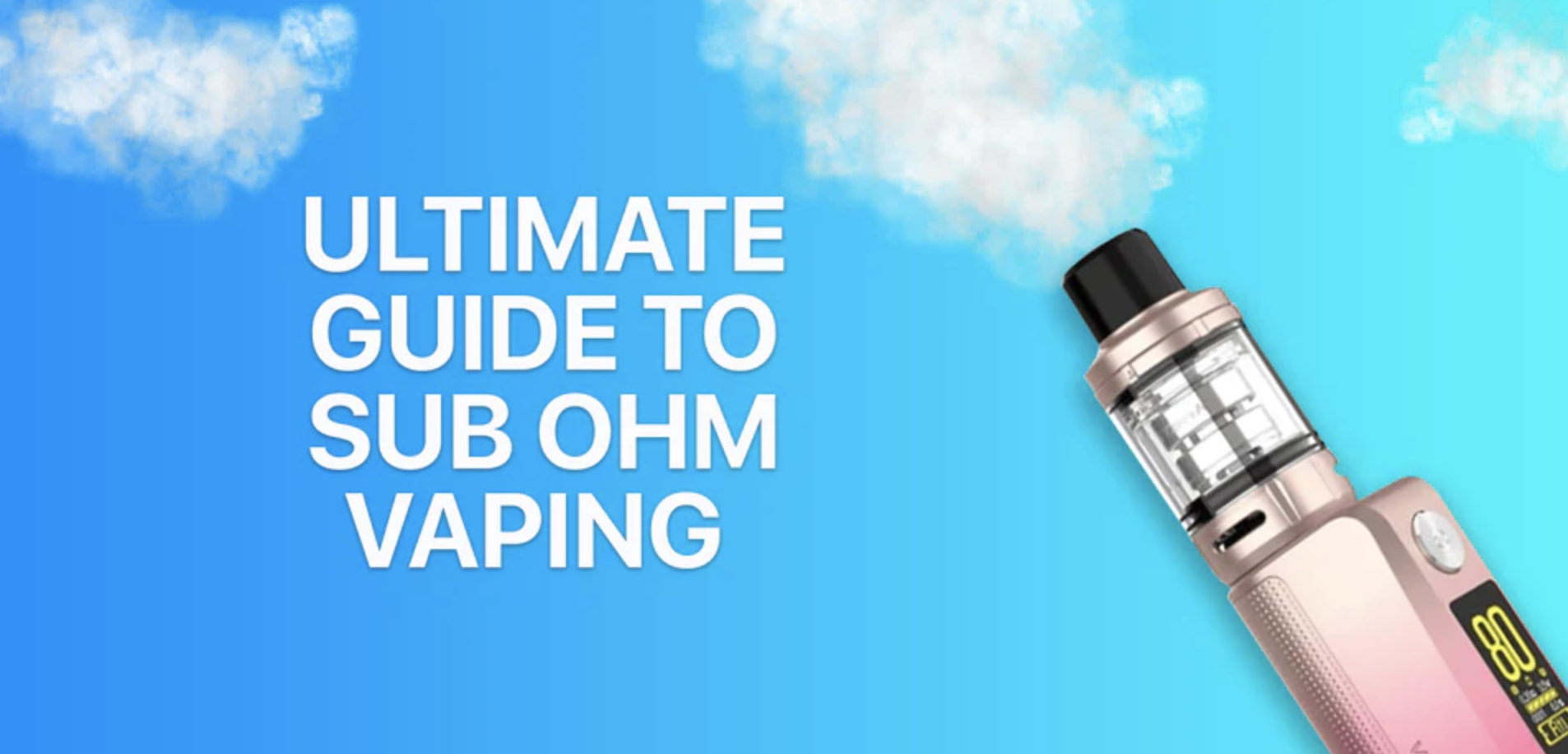Exploring Sub-Ohm Vaping: A Comprehensive Guide
Sub-ohm vaping has gained significant popularity among vaping enthusiasts due to its ability to produce larger vapor clouds, enhanced flavor, and a more intense vaping experience. However, for beginners or those unfamiliar with sub-ohm vaping, it can be a bit overwhelming. In this comprehensive guide, we will explore the world of sub-ohm vaping, covering everything from the basics to advanced techniques. By the end of this blog post, you'll have a solid understanding of sub-ohm vaping and be ready to embark on your sub-ohm vaping journey.
- Understanding Sub-Ohm Vaping:
Sub-ohm vaping refers to using a vaping device with a coil resistance below one ohm. Traditional vaping devices typically have coil resistances above one ohm. The lower resistance in sub-ohm vaping allows for increased power output and higher current flow, resulting in larger vapor production and intensified flavor.
- Selecting the Right Device:
To engage in sub-ohm vaping, you'll need a compatible vaping device. Sub-ohm tanks, rebuildable tank atomizers (RTAs), or rebuildable dripping atomizers (RDAs) are popular options for sub-ohm vaping. These devices are designed to handle lower coil resistances and higher wattage outputs. Research and choose a device that suits your preferences, taking into account factors such as airflow control, tank capacity, ease of use, and build quality.
- Battery Safety and Power Requirements:
Sub-ohm vaping requires more power than traditional vaping, so it's crucial to understand battery safety and choose the appropriate batteries for your device. Use high-quality batteries from reputable manufacturers, ensuring they have sufficient capacity and can handle the higher power demands of sub-ohm vaping. Understanding Ohm's Law and battery safety precautions is essential to prevent accidents and ensure a safe vaping experience.
- Coil Resistance and Build:
When it comes to sub-ohm vaping, the coil resistance plays a significant role in the overall experience. Lower coil resistances, such as 0.2 ohms or lower, are common in sub-ohm setups. Pre-built sub-ohm coils are readily available and offer convenience, but many enthusiasts prefer building their own coils using specialized wire and wicking materials. Building your own coils allows for customization and fine-tuning of the vaping experience.
- E-Liquid Selection:
Sub-ohm vaping can consume more e-liquid due to the increased vapor production. When selecting e-liquids for sub-ohm vaping, consider the ratio of propylene glycol (PG) and vegetable glycerin (VG). Higher VG ratios, such as 70/30 or max VG blends, are commonly used for sub-ohm vaping due to their ability to produce denser vapor. Experiment with different flavors and nicotine strengths to find your preferred combination.
- Airflow and Temperature Control:
Most sub-ohm devices offer adjustable airflow, allowing you to fine-tune your vaping experience. Adjusting the airflow can affect vapor density, flavor, and throat hit. Additionally, some devices offer temperature control (TC) functionality, which allows you to set a specific temperature limit for your coils. TC vaping can help prevent dry hits and provide a consistent vaping experience.
- Proper Wicking Techniques:
Proper wicking is essential for sub-ohm vaping to ensure efficient e-liquid delivery to the coil and prevent dry hits. Organic cotton is commonly used as a wicking material. When wicking your coils, ensure the cotton is snug but not overly tight within the coil. It should have enough room to allow e-liquid to flow freely.
- Understanding Battery Life and E-Liquid Consumption:
Sub-ohm vaping can consume more battery power and e-liquid compared to traditional vaping. Higher wattage settings and increased vapor production result in more strain on the batteries and faster e-liquid consumption. It's important to be prepared with spare batteries and extra e-liquid to avoid interruptions in your vaping experience.
- Practice and Experimentation:
As with any vaping style, sub-ohm vaping requires practice and experimentation to find your sweet spot. Adjusting wattage, airflow, coil builds, and e-liquid combinations may be necessary to achieve your desired vaping experience. Take your time to explore and fine-tune these variables to personalize your sub-ohm vaping journey.
Conclusion:
Sub-ohm vaping opens up a new realm of possibilities for vaping enthusiasts, providing intense flavor, larger vapor clouds, and a unique vaping experience. By understanding the basics of sub-ohm vaping, selecting the right device, practicing battery safety, building coils, choosing appropriate e-liquids, and fine-tuning variables such as airflow and wattage, you can enjoy the benefits of sub-ohm vaping. Remember to always prioritize safety, stay informed, and embrace the joy of exploration and experimentation as you dive into the world of sub-ohm vaping.

